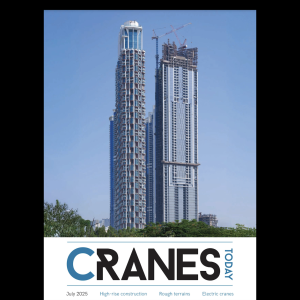CEA was established in 2000. The company offers a range of special transport, project logistics and heavy lift services. CEA’s decision to launch its own Surelift brand of spreader beams came out of shortcomings that the company thought it saw in existing products. One of these was the risk of misassembly.
Banks says, "One of the disadvantages we noticed was that on certain size beams different capacity end units can be fitted to the same beams, affecting their capacity. For example, we’d seen that on a 110t beam, end units from 70t to 240t can be fitted and in fact different ones could be fitted on opposite ends of the beam. There were several different ways to misassemble this and other beams in the range.
"Especially in areas where English may not be read or spoken by all rigging crews, this poses a serious safety risk. With our new design, it is not possible to misassemble beam components of different capacities. We provide easy to understand graphics showing how to configure assemble every span on the load charts. Our website features our unique Surelift Planner which simplifies the selection of the correct beams and the other components such as slings and shackles for every lift."
Another challenge when assembling spreader beams can be accessing the bolts, and using the correct torque wrench settings. Banks says, "There were problems when assembling the beams. They would lay straight on the ground, making it almost impossible to insert the lower bolts without turning the beam.
We added small flanges, 2-3in high, under each beam section, raising it off the ground so you don’t have to roll the beam over to put bolts in and torque them up. We also provide a torque wrench with pre-set markings with every beam, making sure the bolts are tightened correctly."
Handling the beams also introduces risks. Banks says, "We’ve included handling holes at the top of each flange section, allowing the beam to be lifted using nylon slings.
This avoids damage to the beam from lifting directly with a forklift." The beams are also protected by marine paint, offered as standard.
Banks says the new beams will be suitable for customers around the world. "We looked at the whole modular spreader beam concept. We cut no corners.
It took longer than we expected to perfect the design, but we’ve now had the system certified by DNV, and we know it is the best systems available on the market today.
"Our first target market is South East Asia, but we are already offering beams to markets worldwide through a distributor network, some of which have already been appointed. We are in final discussions with others. These will feature on our web site as they are appointed."






